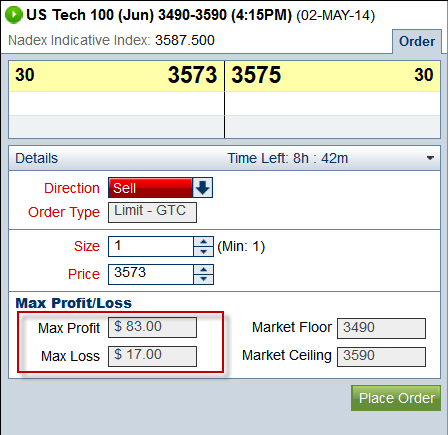Credit spreads Options Blog
Post on: 21 Июнь, 2015 No Comment

November 26, 2013
The Fundamentals of Iron Condors
Have you ever noticed a professional athlete warming up before a game or match? What are they doing? They are stretching, running, throwing and catching just to name a few for example. What they are really doing is working on the fundamentals. To be good at anything requires learning the fundamentals and constantly working on them throughout your career no matter what your career is.
Option trading is no different. Even traders who have traded for years, who trade complex strategies return to the fundamentals to make their trading decisions. Take trading iron condors. Trading iron condors requires utilizing the fundamentals. Traders who are trading iron condors are trading a fairly complex, four-legged option strategy. They need to be able to visualize the strategy in order to analyze it and ultimately decide whether or not they should be trading iron condors or something else.
Traders trading iron condors should consider the spread from several different perspectives. Specifically, they should consider it as combinations of other spreads. When a trader is trading iron condors, the trader is in fact trading a pair of credit spreads. An iron condor is a put credit spread combined with a call credit spread. That’s one way to look at it.
Trading iron condors can also be considered from the strangle-trading perspective. An iron condor is a short strangle combined with a long strangle with wider strikes. The profit (and risk) comes from the short strangle, while the long one provides protection.
An iron condor can also be thought of as four individual option positions. Traders trading iron condors have a position in a long put, in a short put, in a short call and in a long call. Thinking of trading iron condors from this perspective, in particular, can help traders make adjustment and closing decision more effectively.
And, of course, an iron condor is, well, an iron condor! It is a single strategy in which the risk can be observed on a P&(L) diagram or through the greeks.
This strategy-break-down technique is not just suited for trading iron condors, but for trading all multi-legged strategies. It is an effective analysis technique similar to how car shoppers consider buying a car. They look at the front; then walk around to the side, then the back; they look under the hood and at the interior. All the while, they are considering this one purchase, but just from many different perspectives. Doing this on every potential trade can only improve your odds.
John Kmiecik
Senior Options Instructor
March 14, 2013
Six-Year Low in the VIX? What’s It Mean to YOUR Options Trading?
The VIX, or CBOE’s Implied Volatility Index, hit a six-year low this week. What’s that mean to options trading? Lots!
Options trading is greatly affected by implied volatility. At its most basic level, when the VIX is low, it tends to mean lousy options trading.
Option traders are not incented to trade when the VIX is low. Traders generally don’t want to sell options when premiums are so low. There is no reward and still there is always the specter of the risk of an unexpected market shock. And, option traders don’t want to buy options either. Why? Because when the VIX is low, the VIX low is for a reason. Because market volatility is low. Why would traders want to buy options (and endure time decay) is the market isn’t moving?
And so, as always, the devil is in the details. Right now, there actually exists a somewhat atypical pattern in many stock options. Many stocks have their implied volatility trading decidedly below historical volatility levels. Though this volatility set up can be seen here and there at any given time, it is more common than usual. That means cheap volatility trades (i.e. underpriced options) are more abundant.
Stocks like CRM, C, GE, F, and even the almighty AAPL all have implied volatility below their historical volatility.
That means that even though overall stock volatility (as measured by historical volatility) is low, the options are priced at an even lower level. That means time decay is very cheap per the level of price action in these stocks. And, implied volatility in these stocks (and probably the VIX as well) is likely to rise to catch up to historical volatility levels—assuming the current price action continues as it is.
So, traders should be careful not to sell too many option spreads (i.e. credit spreads) at these fire-sale levels. Instead, traders should look to positive vega spreads (i.e. debit spreads), at least until implied volatility rises offering worthy premiums to option sellers.














